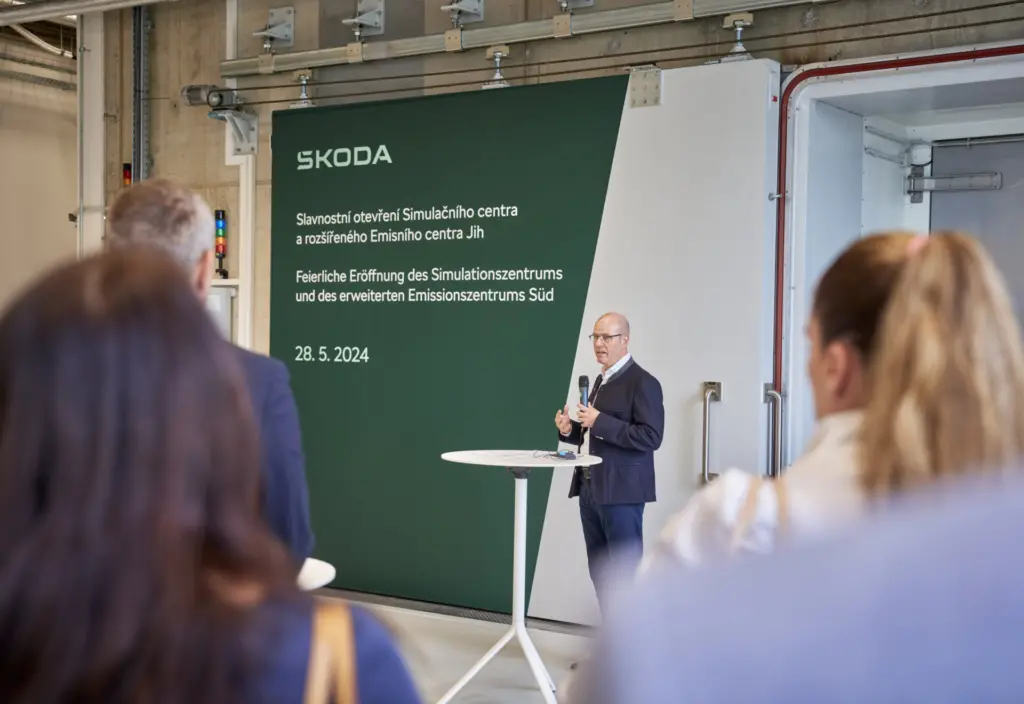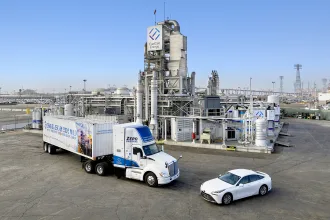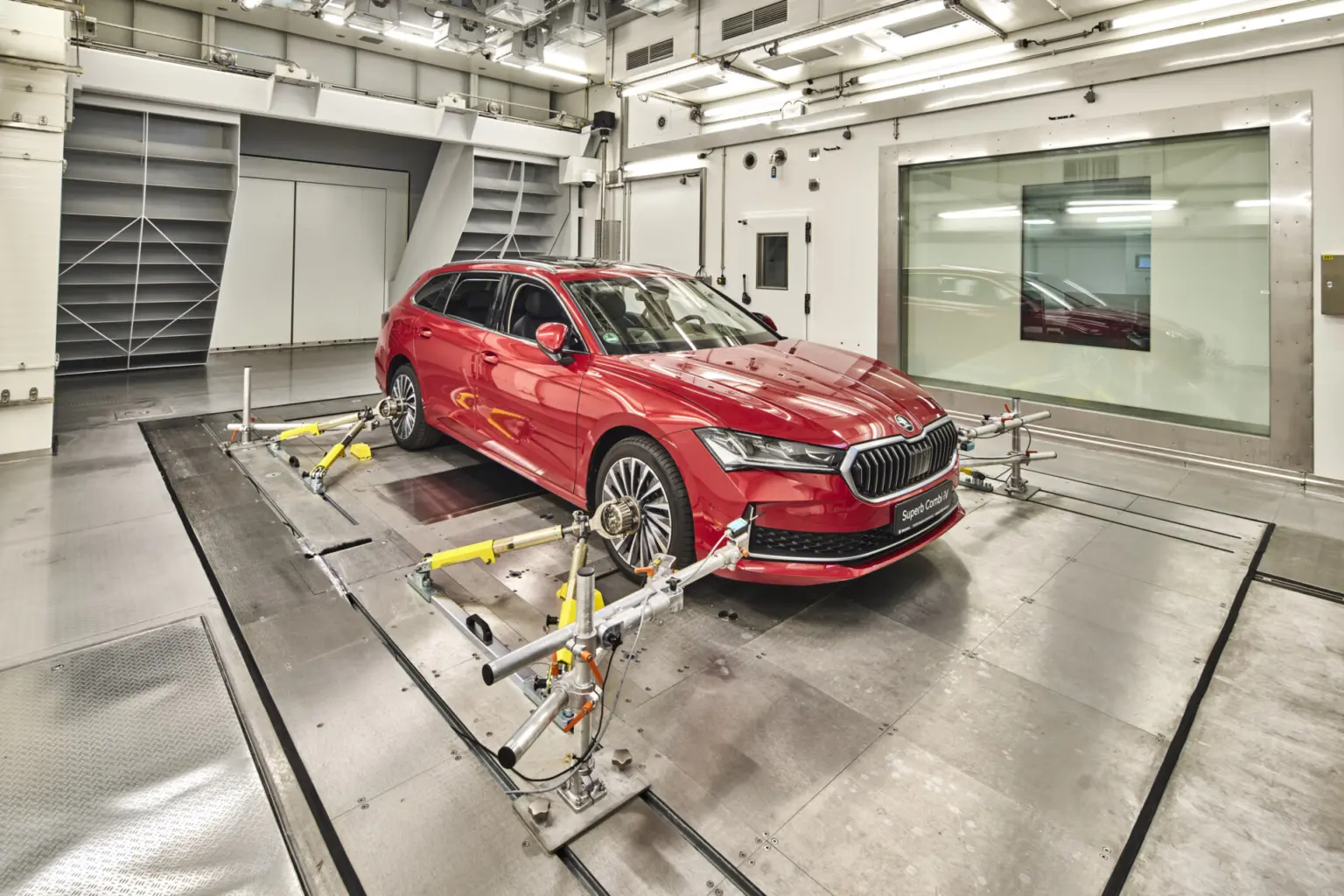› New Simulation Centre to comprehensively test propulsion and thermal management systems for vehicles with petrol, diesel, hybrid, and fully electric powertrains
› Following investments of almost €22 million, Škoda Auto has significantly expanded its development capabilities in functionality-focused vehicle development
› The unique laboratory within the Volkswagen Group offers unparalleled versatility in simulated conditions
Škoda Auto has inaugurated new facilities for the Emissions Centre and a brand-new Simulation Centre in Mladá Boleslav. Following investments of almost €22 million, the laboratory will bolster the car manufacturer’s in-house development capabilities within the Technical Development department. The state-of-the-art technologies allow for the precise and accurate simulation of a wide range of climatic conditions, enabling comprehensive tests that mimic real-world operations. The new Simulation Centre houses a laboratory unique in the Czech Republic and the Volkswagen Group and is among the most modern facilities of its kind in Europe.
“Opening the new Simulation Centre represents a significant step forward in automotive development and reaffirms Škoda Auto’s leading position in the evolution and testing of drive and thermal management systems. The importance of the new Simulation Centre and the Emissions Centre will continue to grow, both in terms of ensuring the quality of our production vehicles and in creating highly efficient powertrains and systems for the future.”
Johannes Neft, Škoda Auto Board Member for Technical Development
Unique combination of cutting-edge technologies
The new Simulation Centre allows vehicle functionality to be tested under extreme load and virtual calculations to be validated across diverse driving conditions, providing a high degree of test variability in various climatic environments. The facility can sustain temperatures from -7 to +50°C while testing. Moreover, the facility can simulate conditions ranging from 10 to 95% relative humidity (crucial for regions like India), sunlight exposure, and mountain driving at altitudes of up to 5500 metres above sea level. The laboratory also features a modern roller dynamometer for vehicles with outputs up to 300 kW, capable of simulating driving resistances at speeds of up to 265 km/h.
Additionally, it is equipped with sophisticated air ducting with two fans for airflow simulation, an emissions analysis system, and a high-speed charging station for electric vehicles with outputs up to 400 kW. The ability to combine these technologies allows for complex tests that closely replicate real-world operations with high accuracy and precision in results, while the analysis and evaluation of the data are conducted on-site. Performing up to 850 tests annually, the Simulation Centre significantly expands the possibilities for developing new technical solutions.

The construction also includes an expansion of the Emissions Centre in response to current and upcoming legislative requirements, such as the EU7 emission standard. The new measurement booths will primarily be used by the Quality department to ensure that both pre-production and production vehicles comply with these standards.
Further confirmation of technical competence within the Volkswagen Group
The demanding tests at the Simulation Centre, the construction of which began in 2021 with investments of almost €22 million, are conducted per the current and future legislative standards of the European Union, China, India, Brazil, and other regions. The opening of the facility marks another significant step for Škoda in assuming responsibility for the development of Volkswagen’s MQB27 platform, as well as overseeing the overall development of the EA211 series of petrol engines and associated systems such as air intake, exhaust, cooling, and thermal management. Additionally, the Czech car manufacturer handles all related manual transmissions and the application of the DQ200 automatic transmission.
The Technical Development department is continuously looking for new technical staff from a wide range of disciplines to join its ranks. More information can be found at https://www.skoda-career.com/
Key data on Škoda Auto’s Simulation Centre:
Construction timeline: October 2021 – May 2024 (890 days)
Building area: 550 m²
Wiring: 35,420 metres connecting measuring technologies
Coolant volume: 45 m³ in cooling circuits
Airflow: approximately 20,000 m³/h through ventilation units
Dynamometric rollers: up to 300 kW capacity
Maximum simulated speed: 265 km/h
Highest simulated altitude: 5,500 metres above sea level
Sustained temperature range: -7 to +50 °C
Relative humidity range: 10 to 95%
Solar simulation: up to 1200 W/m²














